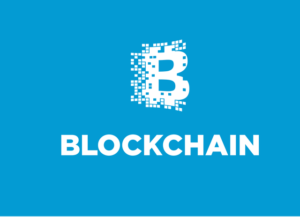Blockchain is a term you see fairly much when browsing tech—and non-tech—sites these days. It is widely known as the technology that constitutes the infrastructure of Bitcoin (what’s bitcoin BTW?), a mysterious cryptocurrency created by a mysterious scientist in 2009. Some even confuse it as a synonym for bitcoin. But the reality is that blockchain is a disruptive technology that has the potential to transform a wide variety of business processes.
In this article, we will clarify what the blockchain is—and what it isn’t—what’s it’s relation to bitcoin, and what are its applications beyond the realm of cryptocurrencies.
What is blockchain anyway?
At its essence, the blockchain is a distributed ledger—or list—of all transactions across a peer-to-peer network. Put simply, you can think of blockchain as a data structure containing transactions that is shared and synced among nodes in a network (but in fact it gets much more complicated than that). Each node has a copy of the entire ledger and works with others to maintain its consistency.
Changes to the ledger are made through consensus among the participants. When someone wants to add a new record to the blockchain ledger, it has to be verified by the participants in the network, all of whom have a copy of the ledger. If a majority of the nodes agree that the transaction looks valid, it will be approved and will be inserted in a new “block” which will be appended to the ledger at all the locations where it is stored.
Along with the use of cryptography and digital signatures, this approach addresses the issue of security while obviating the need for a central authority.
Each new block can store one or more transactions and is tied to previous ones through digital signatures or hashes. Transactions are indefinitely stored and can’t be modified after they’ve been validated and committed to the ledger.
What makes blockchain unique?
Blockchain’s approach to dealing with transactions is a break from the usual centralized and broker-based model, in which a central server is responsible for processing and storing all transactions. And this is one of the key features that makes blockchain attractive. This creates fault tolerance, so there’s no single point of failure in the blockchain, while also providing security that is on par with what is being offered in the centralized paradigm.
This enables companies, entities and individuals to make and verify transactions instantaneously without relying on a central authority. This is especially useful in the finance industry where the transfer of money is usually tied to and controlled by clearing houses that maintain ledgers and take days to verify and execute a transaction, and collect considerable fees. The blockchain can verify and apply changes within milliseconds, and the costs are next to nothing. In the blockchain model, each bank in a network would have its own copy of the ledger and transactions would be verified and carried out through communications between banks, and within seconds. This will cut costs and increase efficiency.
Another unique feature of the blockchain is its immutability, i.e. it is nearly impossible to tamper with records previously stored in a blockchain. Each new block being tied to previous ones through cryptographic algorithms and calculations, which means slightest alteration in the blockchain will immediately disrupt and invalidate the entire chain. And with the ledger being replicated across many nodes, it becomes even harder to falsify transactions and the ledger’s history.
What are the applications of blockchain
Bitcoin was the first concrete application of blockchain. It was proposed in 2008 in a paper presented by a person—or a group of people, some say—called Satoshi Nakamato. Bitcoin uses blockchain to digitally send bitcoins—its namesake currency—between parties without the need for the interference of a third-party broker.
But bitcoin isn’t the only application of blockchain. The distributed ledger makes it easier to create cost-efficient business networks where virtually anything of value can be tracked and traded—without requiring a central point of control.
For instance, blockchain can be used to keep track of assets and goods as they move down the supply chain. Other industries such as stock exchange can make use of the blockchain mechanism to transfer ownership in a secure, peer-to-peer mechanism.
In the IoT industry, blockchain can help connect billions of devices in a secure way that won’t require centralized cloud servers. It can also be the backbone that will enable autonomous machines that will pay for buy and sell services from each other in the future. (There has to be standards in place before they can be totally secured).
Other industries include retail, healthcare, gaming and many others.
Smart contracts will take the blockchain to the next level, enabling it to do more than just exchange information and get involved in more complex operations.
Different flavors of blockchain
Based on the specific needs of the application making use of blockchain, several of its characteristics might change. In fact, the different implementations of blockchain and different cryptocurrencies that are using it vary in different sectors.
Permission
Blockchains can be public or “permissionless,” such as the bitcoin blockchain, in which everyone can participate and add transactions. This is the model used by bitcoin. Other organizations are exploring the implementation of “permissioned” blockchains, in which the network is made up of known participants only. Security and authentication mechanisms vary in these different blockchains.
Anonymity
With ledgers being distributed among nodes, the level of anonymity is also a matter of importance. For instance, bitcoin does not require any personally identifiable information to send or receive payments on the blockchain. However, all transactions are recorded online for everyone to see, which lends a certain amount of transparency and makes total anonymity quite complicated. That’s why it’s known as pseudonymous.
Other implementations of blockchain, such as ZeroCoin, use other mechanisms (zero-knowledge proof) to enable verification without publishing transaction data.
Consensus
Consensus is the mechanism used by nodes in a blockchain to securely verify and validate transactions while maintaining the consistency and integrity of the ledger. The topic is a bit complicated, but the most prevalent form used is the “proof of work” consensus model used by bitcoin, in which nodes—called “miners”—spend computation cycles to run intensive hashing algorithms and prove the authenticity of the block they’re proposing to add. The PoW mechanism prevents DoS attacks and spam.
“Proof of stake” is another popular consensus model, in which nodes are required to prove ownership of certain amount of currency (their “stake”) to validate transactions.
This is just the beginning
Blockchain is a new way of communicating and transferring data. We still don’t know quite how it will evolve in the future, but what we do know is that it is bound to change quite a few things. A look at the figures presented in this Business Insider article proves why we can call it a disruptive technology.
I don’t know about you, but I’m excited about what blockchain surprises are waiting to be discovered down the horizon and will be exploring its uses more in the coming months.


